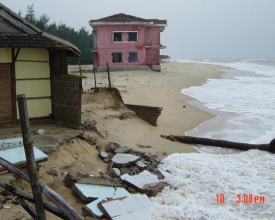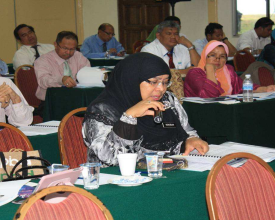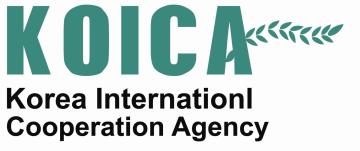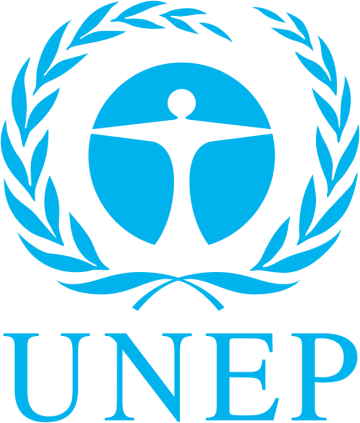
Regional Strategy on Coastal Erosion Management
Full Solution
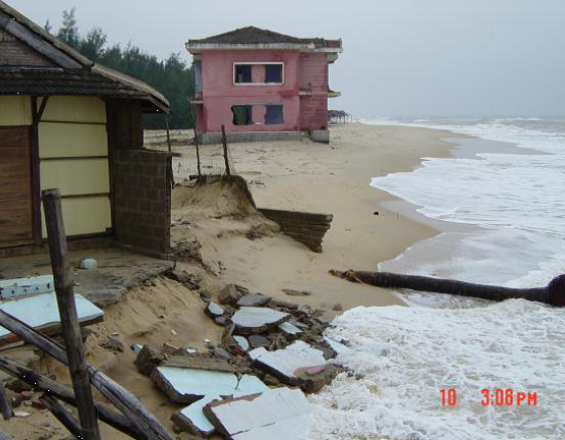
Coastal erosion in Vietnam.
Le Van Cong
The regional strategy addresses coastal erosion due to sea-level rise, policy and operational gaps in six East Asian Seas countries. National authorities assess the national setting, gaps and needs and identify directions and priority actions for addressing coastal erosion. National reports on results and recommendations are presented, discussed and agreed through public participation and a national consultation process with all stakeholders.
Last update: 30 Sep 2020
8235 Views
Context
Challenges addressed
Sea-level rise induced coastal erosion threatens coastal ecosystems, communities and economies in six littoral East Asian countries. The strategy provides a regional framework and practical guidance to alleviate operational and policy gaps. It builds capacity of stakeholders in participating countries to effectively manage coastal resources and associated ecosystems.
Location
Asia
Southeast Asia
Process
Summary of the process
The national assessment of coastal erosion vulnerability due to sea level rise (Building block 1) needs approval of all stakeholders in the framework of a national consultation meeting (Building block 2) to ascertain successful implementation, particular of prioritised activities and pilot projects. Finalised (Building block 1) and jointly approved (Building block 2) national assessment reports are the precondition for developing the regional assessment report (Building block 3) that summaries major facts and recommendations for each country. It provides the basis of a regional strategy for coastal erosion management and it also acts as a cross-learning resource book for all partners.
Awareness and recognition for the need of coastal erosion management to increase coastal resilience and to ensure livelihood of people, as well as support and commitment from national governments and development partners are success factors of each building block and the solution.
Building Blocks
National Assessment of coastal Vulnerability
National assessment - situation analysis - of coastal vulnerability provides a detailed overview of the states of erosion applying a standardised format agreed by all participating countries. It includes relevant policies, legal and institutional mechanisms, gaps and needs and interventions pertinent for addressing coastal erosion at national and sub-national levels. Priorities for action (pilot interventions) to be implemented by governments are defined.
Enabling factors
Conditions for adoption elsewhere:
• Awareness and recognition of the problem of coastal erosion and sea-level rise and the importance and value of national assessments to address the problem.
• Full support and commitment from national governments and authorities including development partners.
Lesson learned
Coastal erosion management involves a range of ministries and authorities at various governmental levels. Bringing them all together to discuss and agree on the assessment reports and pilot interventions is quite a challenge which was addressed by the project through national consultations.
National reports assessing the national setting and the magnitude of the problem of coastal erosion will serve as a major reference in the development of new or updating of existing national plans, policies, strategies and programs on integrated coastal management at national and local levels. With identified specific capacity building activities and pilot interventions, the national reports could be integrated into a regional report which could later be used in the development of future regional programmes for coastal erosion management for regional implementation.
National Consultation Meeting
Bring together all relevant national authorities and stakeholders in a meeting organized by the national institution responsible for coastal management to exchange any relevant information on coastal erosion, and to enhance awareness of national and local authorities on coastal erosion issues and needs. Present all findings and recommendations, particularly pilot interventions to be developed and implemented by each country for joined agreement.
Enabling factors
Conditions for adoption elsewhere:
• Awareness of the problem.
• Commitment and support of national governments and authorities for defining and applying the solution for effective coastal management.
Lesson learned
The commitment and support of national governments and authorities for implementing all necessary steps of the solution for effective and sustainable coastal erosion management is a key factor to success.
The establishment of National Project Focal Points (NPFPs) partners in each of the participating countries facilitates networking between the project and all other stakeholders at local, national and regional levels.
National consultations with national authorities and stakeholders is paramount to establish a transparent dialogue and cooperation between all partners concerned, to ensure that essential information and know-how on the problems to be solved is shared. National consultation meetings proofed crucial to ensure joint discussions and agreement of all stakeholders. They encourage cross-learning and team building, as they also enhance cooperation, coordination and dialogue between and among stakeholders.
Regional Assessment Report
Summarise national assessments in a standardised format to provide the basis and a resource book for ecosystem-based and sustainable integrated coastal zone management framework. Recapitulate valuable information for the effective management of coastal erosion region-wide to improve coastal resilience and consequently reducing impacts from sea level rise on ecosystems, economy, safety, health, quality of life and livelihoods of people.
Enabling factors
Conditions for adoption elsewhere:
• Information on policies, legal and institutional mechanisms,
• Knowledge on past, current and planned interventions and development support,
• Gaps and needs in policies, capacities, institutional arrangement and regulatory frameworks,
• Identification, prioritisation and budgeting of activities,
• Design and planning of specific, needs-based pilot interventions suitable for future replication or scaling up.
Lesson learned
- not available -
Impacts
The solution builds capacities of national authorities. It provides a vital reference for developing new or revising plans, policies, strategies and programs on integrated coastal management at national and local levels. National assessment and consultation exercises equip national and local authorities to better address principal impacts of coastal erosion and the vulnerability of communities. The implementation of priority or pilot interventions will manifest the efficiency in ecosystem resilience, livelihood of local communities and national policies and strategies.
Beneficiaries
Coastal communities and administration, national authorities and large-scale civil society.
Story
With a long coastline, coastal erosion is a constant threat to Vietnam and is getting more serious as a consequence of more storms and rising sea levels caused by climate change, experts reported at a workshop in Hanoi in July 17, 2013.
Addressing the workshop, which discussed the national assessment report on coastal erosion, Deputy Director of the Vietnam Administration of Seas and Islands Vu Si Tuan said: “Vietnam has implemented an array of programmes at different levels to assess the situation of erosion and deposition, particularly in key regions, and built scientific bases for prevention measures. However, the country has not been able to solve many problems relating to this threat. The YEOSU coastal erosion project run by the Coordinating Body on the Seas of East Asia (COBSEA) is greatly helpful to COBSEA members, including Vietnam.”
The drafting of the national assessment report on coastal erosion will provide input information for COBSEA to build a regional project to address challenges posed by climate change in general and coastal erosion in particular.
According to the project’s consultant Rey Molina, it aims to build COBSEA members’ resilience and management capacity of coastal erosion and sea level rise threats.
At the workshop, participants suggested a number of measures, for example protecting forests, raising local people’s awareness and building a database of coastal erosion.
